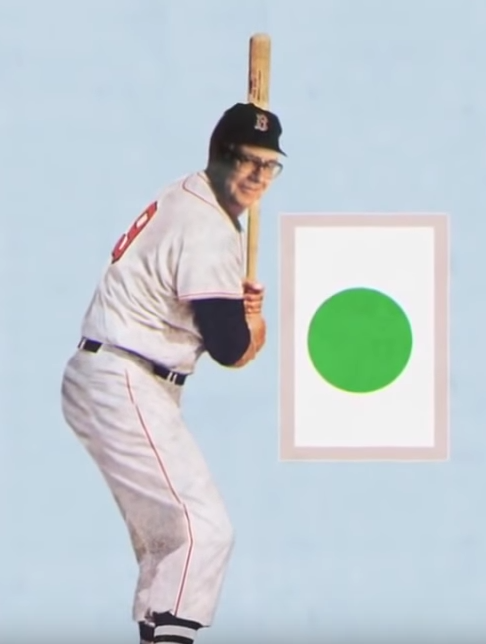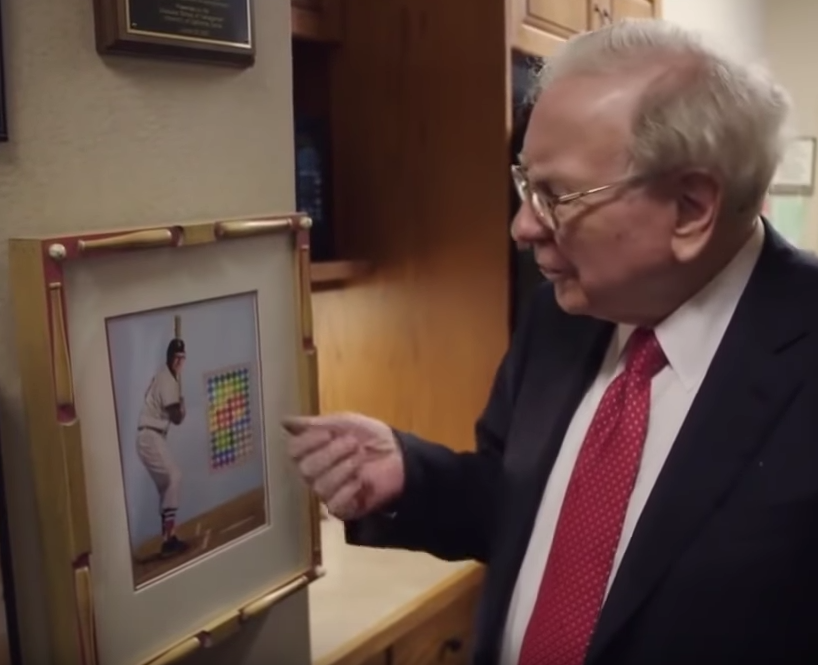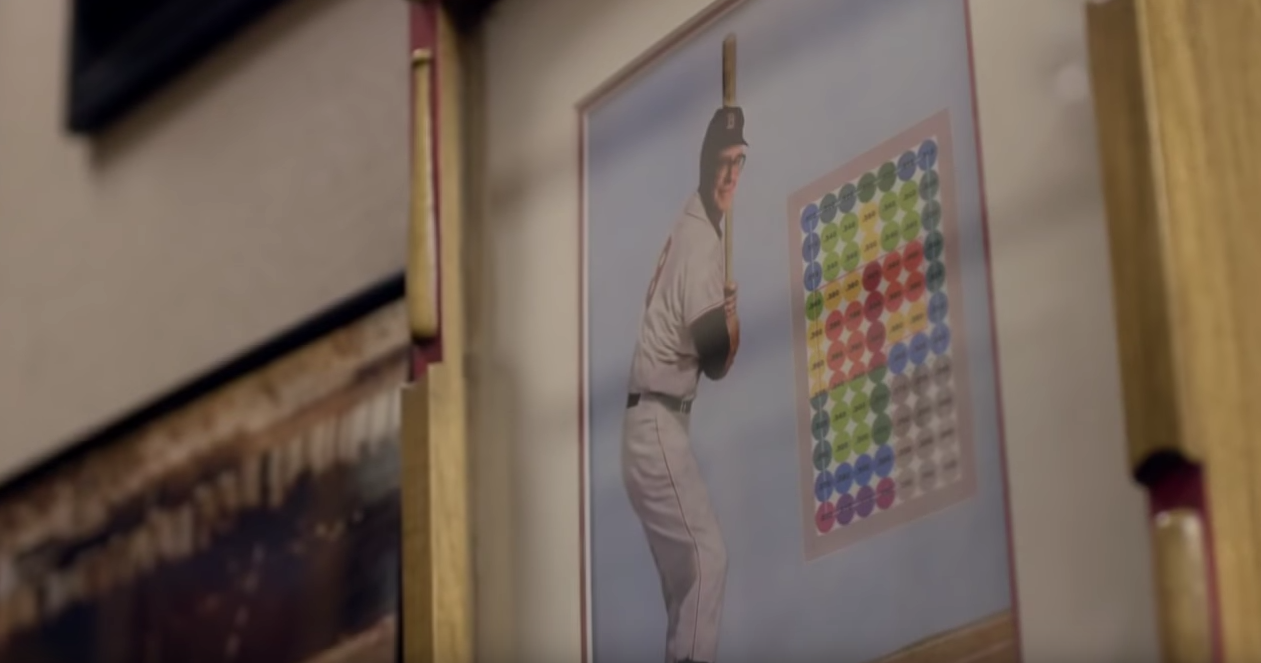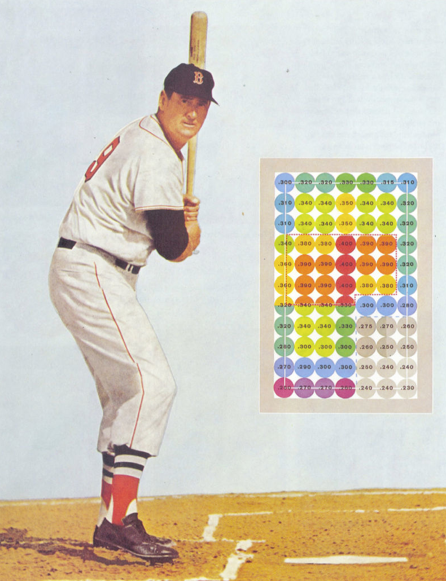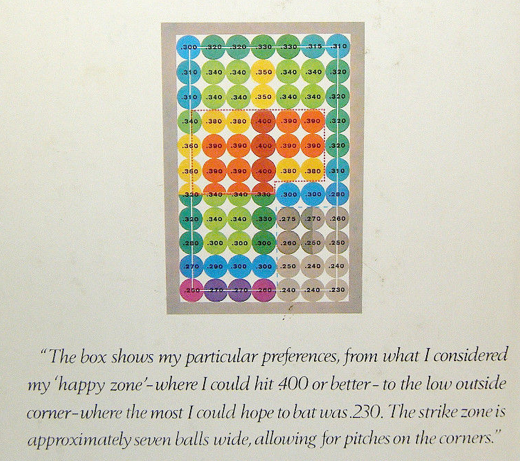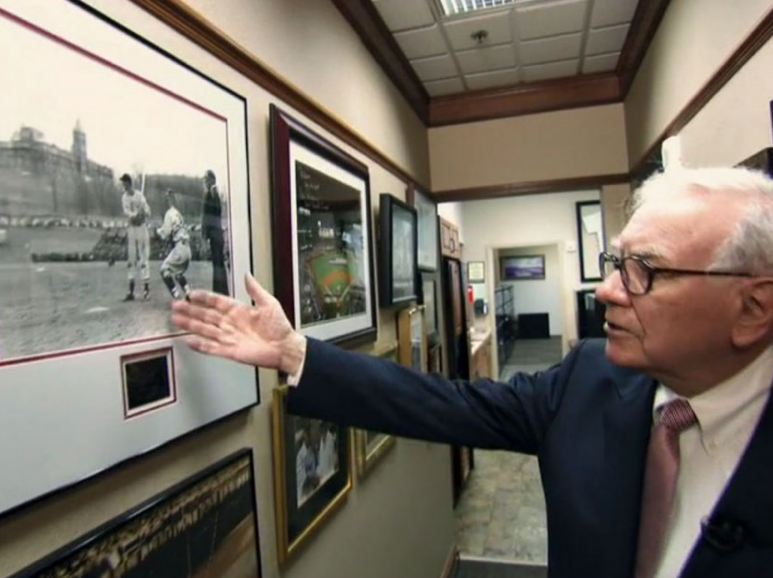"Everybody knows how to hit - but very few really do." Ted Williams
Warren Buffett has long recognised the importance of exercising patience and sticking within your circle of competence when investing. Buffett regularly uses the analogy of the baseball player who only strikes the ball when it's in his or her sweet-spot. Unlike baseball there are no called strikes in investing. An investor can wait for the day a good pitch comes along.
Buffett often refers to the Hall-of-Fame slugger Ted Williams who played for the Boston Red Sox and is arguably the greatest batter of all time.
Ted Williams approached batting in a methodical way, he worked out his optimal strike zone where the odds were in his favour and he maintained the discipline to only swing if the ball was in that zone. By the time Ted Williams retired he had a .344 batting average, 521 home runs, and a 0.482 on-base percentage, the highest of all time.
Buffett referred to Ted Williams in his 1997 letter .... "We try to exert a Ted Williams kind of discipline. In his book The Science of Hitting, Ted explains that he carved the strike zone into 77 cells, each the size of a baseball. Swinging only at balls in his "best" cell, he knew, would allow him to bat .400; reaching for balls in his "worst" spot, the low outside corner of the strike zone, would reduce him to .230. In other words, waiting for the fat pitch would mean a trip to the Hall of Fame; swinging indiscriminately would mean a ticket to the minors.
If they are in the strike zone at all, the business "pitches" we now see are just catching the lower outside corner. If we swing, we will be locked into low returns. But if we let all of today's balls go by, there can be no assurance that the next ones we see will be more to our liking. Perhaps the attractive prices of the past were the aberrations, not the full prices of today. Unlike Ted, we can't be called out if we resist three pitches that are barely in the strike zone; nevertheless, just standing there, day after day, with my bat on my shoulder is not my idea of fun."
In the recent HBO Documentary 'Becoming Warren Buffett', Buffett notes ..
"The trick in investing is just to sit there and watch pitch after pitch go by and wait for the one right in your sweet spot, and if people are yelling, 'Swing, you bum!' ignore them."
Having recently read "The Science of Hitting" I was fascinated by the common threads between a baseball great and the world's Investment Masters. Below I've collated quotes from the book with the Investment Masters Class Tutorials.
Ted Williams noted ‘Everybody knows how to hit—but very few really do.’ I think the same can be said for investing.
The Profit is in the Buying
"Hitting is the most important part of the game, it is where the big money is."
Thinking is Key
"Something you must always take up there with you: proper thinking."
Patience is Critical to Successful Investing
"The longer a batter can wait on pitch, the less chance there is that he will be fooled."
Stick within your Circle of Competence
"You can see in the strike zone picture what I considered my happy areas, where I consistently hit the ball hard for high averages, and the areas graded down to those spots I learned to lay off, especially that low pitch on the outside 3½ inches of the plate. Ty Cobb once said, ‘Ted Williams sees more of the ball than any man alive—but he demands a perfect pitch. He takes too many bases on balls.’”
"I gave the pitcher the outer 2 or 3 inches of the plate on pitches over the low-outside corner"
Continue to Learn
"Hitting is self-education—thinking it out, learning the situations, knowing your opponent, and most important, knowing yourself."
Work Hard
"Practice, practice, practice. I said I hit until the blisters bled, and I did, it was something I forced myself to do to build up those hard, tough calluses."
Its not an Exact Science
"If there is such a thing as a science in sport, hitting a baseball is it. As with any science, there are fundamentals, certain tenets of hitting every good batter or batting coach could tell you. But it is not an exact science."
Control your Emotions
"Hitting a baseball—I’ve said this a thousand times, too—is 50 per cent from the neck up."
Understand Psychology
"Most hitting faults came from a lack of knowledge, uncertainty and fear—and that boils down to knowing yourself. You, the hitter, are the greatest variable in this game, because to know yourself takes dedication."
Find your Edge
"Now, you can sit on the bench, pick your nose, scratch your bottom, and it all goes by, and you’re the loser. The observant guy will get the edge. He’ll take advantage of every opening."
Stick with your Own Style
"Now, there are all kinds of hitting styles. The style must fit the player, not the other way around. It is not a Williams or a DiMaggio or a Ruth method. It is a matter of applying certain truths of hitting to a player’s natural makeup."
Be a Generalist
"They had an article in one of the magazines one year, quoting pitchers on how they pitched to Mantle and me. Billy Pierce said he hoped for “minimum damage” and that he varied his pitches as much as possible—sliders, fast balls, slow-breaking stuff and prayers... What they all were saying was that there was no accurate ‘book’ on me, and that’s what a batter strives for."
Love what you do
"I feel in my heart that nobody in this game ever devoted more concentration to the batter’s box than Theodore Samuel Williams, a guy who practiced until the blisters bled, and loved doing it, and got more delight out of examining by conversation and observation the art of hitting the ball."
Understand History
"I honestly believe I can recall everything there was to know about my first 300 home runs—who the pitcher was, the count, the pitch itself, where the ball landed. I didn’t have to keep a written book on pitchers—I lived a book on pitchers."
Human Nature Doesn't Change
"After two years of managing the Washington Senators, the one big impression I got was that the game hasn’t changed. It’s the same as it was when I played. I see the same type pitchers, the same type hitters."
Keep it Simple
"It’s not really so complicated. It’s a matter of being observant, of learning through trial and error, of picking up things."
Understand Batting Average
"... you are going to fail at your job seven out of ten times."
Learn from your Mistakes
"A great hitter isn’t born, he’s made. He’s made out of practice, fault correction and confidence.”
Focus on the Factors that Matter
"Have you done your homework? What’s this guy’s best pitch? What did he get you out on last time?"
Speak to People in the Know
"Where was the pitch that Frank Howard hit? What was it? Curve ball? Slider? Ask the guys on the bench, the pitchers, everybody. Get in the game, know what’s going on, know the reason when that pitcher takes the bread out of your mouth. That makes sense to me."
Test Investment Ideas
"I was a pain in the neck asking the older guys about pitchers. I was always asking about pitchers: What kind of pitcher is Bobo Newsom? What kind of pitcher is Red Ruffing? What about Tommy Bridges? Ted Lyons? Lefty Gomez? Schoolboy Rowe? I wanted the information, and I wanted to put it to use."
Stick to What you Know
"My strike zone, almost to the inch, was 22 by 32, or 4.8 square feet. Add two inches all around and it becomes 26 by 36, a total of 6.5 square feet—35 per cent more area for the pitcher to work on. Give a major league pitcher that kind of advantage and he’ll murder you."
Buy with a Margin of Safety
"The single most important thing for a hitter was ‘to get a good ball to hit.’”
Avoid Permanent Loss
"Now, if a .250 hitter up forty times gets 10 hits, maybe if he had laid off bad pitches he would have gotten five walks. That’s five fewer at-bats, or 10 hits for 35, or .286. And he would have scored more because he would have been on base more."
Stick with a Process
"What I had more of wasn’t eyesight, it was discipline, and isn’t it funny? I took so many “close” pitches I wound up third in all-time bases-loaded home runs, among the top five in all-time home runs, in the top three in runs batted in per time at bat, and I drove in more than a fifth of the Red Sox’ runs in my twenty years in Boston. I averaged .344 for a career."
Buy Quality Companies
"There isn’t a hitter living who can hit a high ball as well as he can a low, or vice-versa, or outside as well as inside. All hitters have areas they like to hit in. But you can’t beat the fact that you’ve got to get a good ball to hit."
Avoid Value Traps
"More often than not, you hit a bad pitch in a tough spot and nothing happens."
"The greatest hitter living can’t hit bad balls good."
Watch Others
"I was forever trying a new stance, trying to hit like Greenberg or Foxx or somebody."
How Big to Position
"Well, it was obvious to me the first time I saw him play, when he was with the Dodgers in a World Series in 1963. I knew then exactly what I would say to him if I ever got the chance: the value of knowing the strike zone. The value of proper thinking at the plate. The importance of getting a good ball to hit. Of knowing when not to be too big with his swing."
Concentrate
"Ideally, for maximum power and efficiency, you want your stronger hand closer to the point of impact."
Be Adaptable
"The reason hitting a baseball is so tough is that even the best can’t hit all the balls just right. To do so is a matter of corrections every minute, in practice as well as in the game."
Dealing with Losses
"There is no question that some strikes are called balls, and some balls are called strikes, but you’re far better off forgetting the calls that hurt you and concentrating on that next pitch, or that next turn at bat."
"If you’ve struck out on a ball you thought was bad, don’t argue. Talk to a teammate, somebody you know pays as much attention to the game as you do. Ask him if the ball was low or outside or wherever you thought it was, and if he agrees with the umpire, file it in your memory. You’ve got some work to do on that particular pitch. You might even make a diagram for yourself to pinpoint the problem areas. Paul Waner did that, and I did it."
Using Intuition
"Guess? Yes! “Proper thinking” is 50 per cent of effective hitting, and it is more than just doing your homework on a pitcher or studying the situation in a game. It is “anticipating,” too, when you are at the plate, and a lot of hitters will say that is college talk for “guessing” and some will be heard to say in a loud voice, “don’t do it!” They’re wrong. Guessing, or anticipating, goes hand in hand with proper thinking."
"Well, you’ve got to guess, you’ve got to have an idea. All they ever write about the good hitters is what great reflexes they have, what great style, what strength, what quickness, but never how smart the guy is at the plate, and that’s 50 per cent of it. From the ideas come the ‘proper thinking,’ and the ‘anticipation,’ the ‘guessing.’”
"I had 20-10 vision. A lot of guys can see that well. I sure couldn’t read labels on revolving phonograph records as people wrote I did. I couldn’t “see” the bat hit the ball, another thing they wrote, but I knew by the feel of it. A good carpenter doesn’t have to see the head of the hammer strike the nail but he still hits it square every time."
Improving with Age
"I think there are things you learn growing older in the game which practice brings out."
"At eighteen I might not have been quite as strong as I was at twenty-eight or thirty-eight, but I had better eyesight, better reflexes, could run faster, etc. But at seventeen or eighteen I wasn’t thinking as clearly at the plate as I was later on. When I came up with San Diego in 1937, I hit .271, then .291. My average went up steadily thereafter because in those formative years I was exposed to experienced players who knew the game between the pitcher and batter."
Be Aware of the Macro
"The batter who is alert will consider the environment, the park, the background. What kind of a day is it? Is the wind blowing a gale from centerfield? If so, it will be silly to try to hit the ball 480 feet... Is it damp and rainy? The ball you hit won’t go as far because on a damp day the air is heavier. A curve-ball pitcher will be even more effective on a heavy day. Be alert to these things."
Balancing Confidence with Humility
"Oh, I can’t say I never had that little fear at the plate, especially in those early days when I’d be hitting against some guy who was a little out of my class. But I remember the time in Minneapolis, my third year as a professional, when a pitcher named Bill Zuber hit me in the head with a pitch. Knocked me out and put me in the hospital for two days. When I got back in the lineup, I dug in as hard as I could and said to myself, ‘Boy, this isn’t going to stop me. Not a bit.’”
"I know there are hitters who can be intimidated, and pitchers who believe in keeping you loose. Jimmy Piersall told me he was afraid at the plate when he was with the Red Sox, and I tried to needle him out of it. ‘If you’re afraid, you might as well go sell insurance. But why be afraid?’ He worked himself out of it. His confidence grew. If you stay intimidated, you’re done."
Investment Misconceptions - Volatility is Risk - Efficient Markets
"Much of it has been poorly defined, or not defined at all, and some things have been told wrong for years. The consequence is a collection of mistaken ideas that batters parrot around."
Goal is to Make Money
"I think that every player should have goals, goals to keep his interest up over the long haul, goals that are realistic and that reflect improvement. For me, if I couldn’t hit 35 home runs, I was unhappy. If I couldn’t drive in 100 runs, if I couldn’t hit at least .330, I was unhappy. Goals keep you on your toes, make you bear down, give you objectives at those times when you might otherwise be inclined to just go through the motions."
Let's hit the ballpark…
References: 'The Science of Hitting' by Ted Williams and John Underwood, 1970
Photo sources: HBO Documentary - 'Becoming Warren Buffett', 2017
Further Reading: The Science of Hitting [video]



